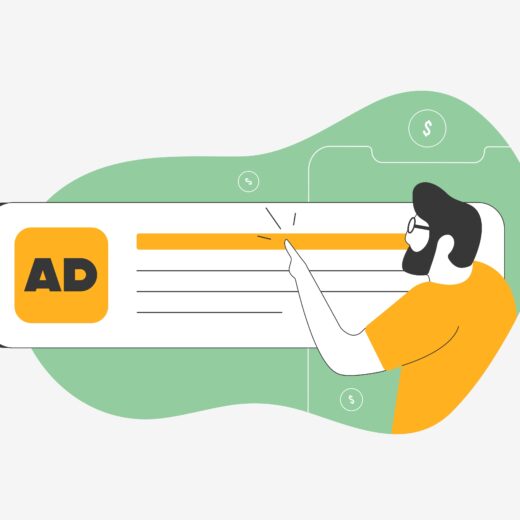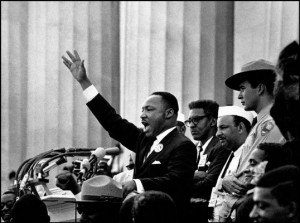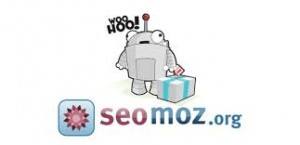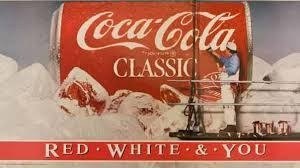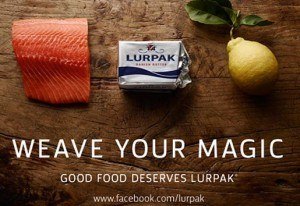7 Rules of Killer Content: Then and Now

Great content has always been at the heart of compelling messages; from landmark speeches and ground-breaking novels to the finest internet landing pages. Leaders like Martin Luther King, Maya Angelou and Winston Churchill knew how to engage audiences through language. The principles they used still apply in business today.
So what are they, and how can they be used effectively? Here are seven techniques to sharpen your content explored through some of the greatest writing of all time.
-
Repetition
“We shall fight on the beaches, we shall fight on the landing grounds…”
(Winston Churchill, We Shall Fight On The Beaches, 1940.)
Repetition is powerful because we find comfort in familiarity. In 1940, William Churchill knew the country was at a crisis point. In his landmark speech, We Shall Fight On The Beaches, he used a rousing combination of rhythmic modal verbs to clatter through any fear or uncertainty.
Phrases like ‘we shall fight,’ ‘we shall defend’, ‘we shall never surrender’, and ‘we shall carry on and struggle’ are short, robust and digestible. They allow no room for self-doubt. The result? A simple and decisive call to arms.
Marketers, too embrace repetition, as noted in the following Apple ad for MacBook Pro:
2. Visionary prediction
“I have a dream that one day on the red hills of Georgia the sons of former slaves and the sons of former slave owners will be able to sit down together at the table of brotherhood.”
(Dr. Martin Luther King Jr., I Have A Dream)
Using cleverly placed irreconcilable contrasts (such as pairing slaves and slave owners with brotherhood), Martin Luther King articulated his dream. It included legislation and impenetrable pieces of policy that he presented though a personal vision. The result was a clear and compelling prediction of where it would lead us.
Consider: “You’re going to like the way you look. I guarantee it.“
In the United States, Men’s Warehouse used this famous declarative statement to make a prediction. The company knew it could exude authority by anticipating their customers’ needs and providing assurance about how they were going to feel.
e.g. You buy a suit to look good. And George Zimmer guarantees it.
It communicated a statement of confidence. Those eleven words make up one of America’s most memorable advertising campaigns of all time.
-
Onomatopoeia
Onomatopoeia is the use of words that sound like what they are. For certain brands, it has been extremely successful at delivering quality content.
Alka-Seltzer employed this technique in 1976 with the following slogan.
“Plop, plop, fizz, fizz. Oh, what a relief it is.”
This content generated a unique impression because it was easy to visualise and gave its readers a sense of value, individuality and assurance. Another example is the breakfast cereal, Rice Krispies. ‘Snap, Crackle and Pop’ is a phrase that is true to the product and unique to the brand.
“Snap, Crackle, Pop”
Onomatopoeia works because it evokes imagery while employing a simple concept. The word may be hard to spell, but the content is easy to remember.
4. Personification
“This being human is a guest house. Every morning a new arrival.”
(Jelaluddin Rumi, The Guest House)
Personification occurs when we assign human qualities to objects. It worked in Rumi’s powerful poem, The Guest House. In the 13th century, Rumi personified humanity as a guest house and human emotions as guests. He also gave advice on how to respond to these visitors.
“The dark thought, the shame, the malice.
meet them at the door laughing and invite them in.”
Personification also worked brilliantly for the U.S. SEO company, Moz. They created Roger, the “Moz Bot”, or robot, who possessed lifelike qualities. Roger addressed a problem that the firm was having with public perception of the SEO market, which at the time was perceived as complicated, deeply technical and untrustworthy.
5. Use of ‘you’
“You may tread me in the very dirt. But still, like dust, I’ll rise...”
(Maya Angelou, Still I Rise)
One of the most popular words in advertising is you. People respond to subjects presented directly to them.
In Still I Rise, Maya Angelou directly confronts racism by using the word ‘you’. This direct approach in writing inspired strength and unity by countering oppression with a message of indomitable triumph.
Coca-Cola knows the power of the word ‘you,’ as seen in the ad below. The Red, White and You campaign was launched in 1986. Its aim was to make the product synonymous with America. Research at the time showed that 75 percent of survey respondents believed that the product symbolised America. These results proved that the campaign was a success.
Three decades on, consider the following ad for Lurpak butter. The same principle applies. The use of ‘you’ in the right context and tone (delivered generously and humbly,) can be very powerful.
6. Alliteration
Alliteration is the repeated sound of the first consonant in a list of words. Shakespeare used alliteration frequently in his prose.
“From forth the fatal loins of these two foes…”
(Sir William Shakespeare, Romeo and Juliet, Prologue to Act 1)
Here’s an example of alliteration in Heinz advertising. It also includes a variant of alliteration called homeoteleuton, (or words that nearly rhyme).
7. Most important: simplicity
Simplicity is crucial because it streamlines the message and demonstrates straightforwardness. Readers find it pleasing and uncomplicated; or readable.
A great book about this is William Zinsser’s On Writing Well. In it, Zinsser states: “Writing improves in direct ratio to the number of things we can keep out of it that shouldn’t be there.” His contention is that less is more, and he urges us to be ruthless about it.
Albert Einstein said: “If you can’t explain it to a six-year-old, you don’t understand it yourself.”
Stephen King said: “the road to hell is paved with adverbs.”
“We choose to go to the moon.”
(John F. Kennedy, The Decision To Go To The Moon).
No adverbs here. Kennedy could have added more to this statement, but it would have taken away from the tenor of his conviction.
“Give me liberty or give me death.”
(Patrick Henry, Give Me Liberty Or Give Me Death)
Short sweet and to the point. In six words we know what Patrick Henry wants and we know to what lengths he would go to get it.
“Just Do It.”
A modern example is the insanely popular Nike slogan, “Just Do It,” as shown below. It has yet to get old.
Use the examples above to get inspired. When writing content, think about your target audience and the message they will need to engage with your brand. Rather than reinventing the wheel, incorporate one of two of the basics into your next campaign. The results may surprise you.




